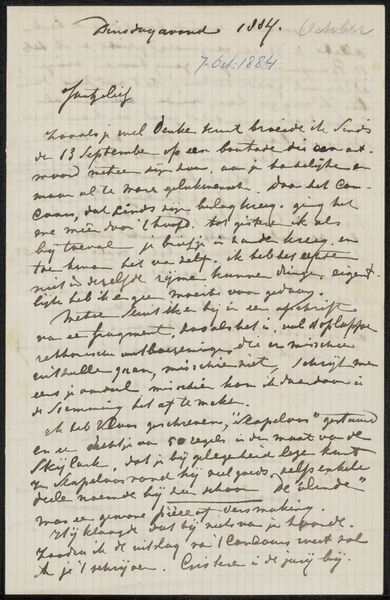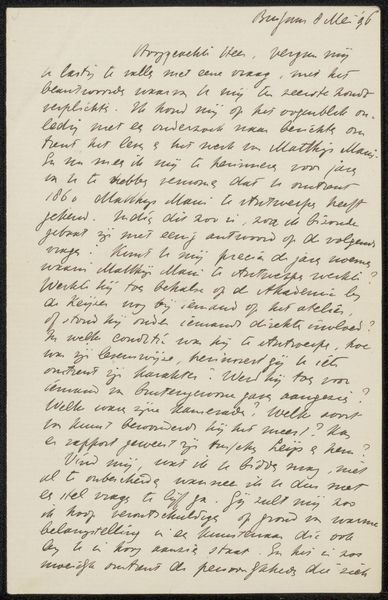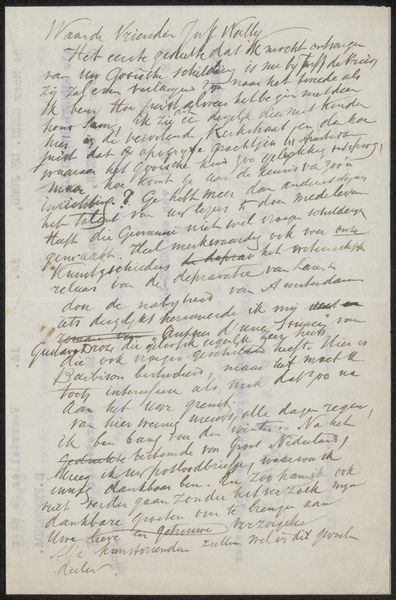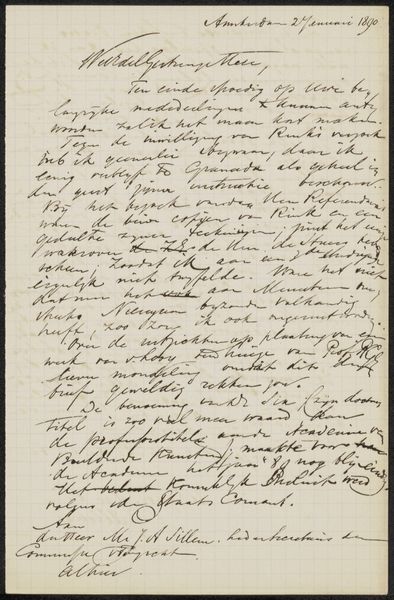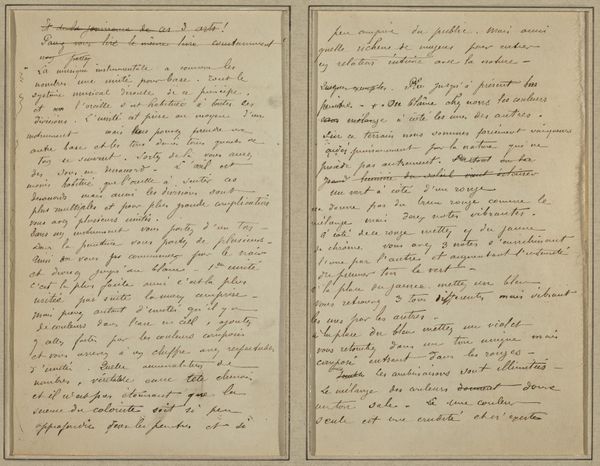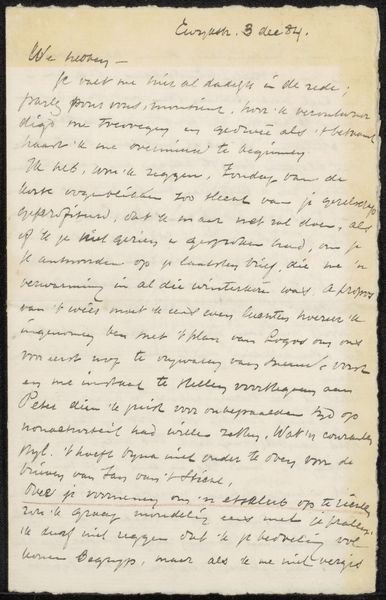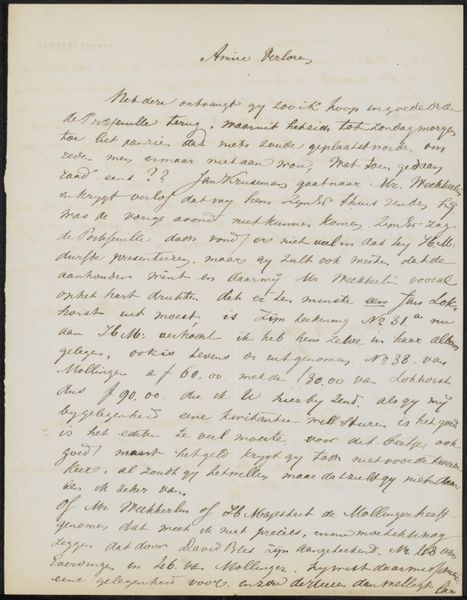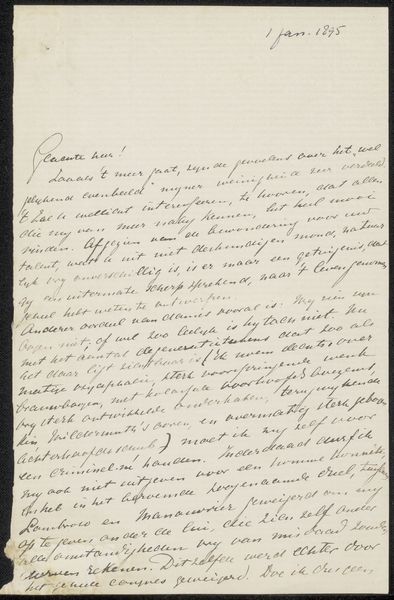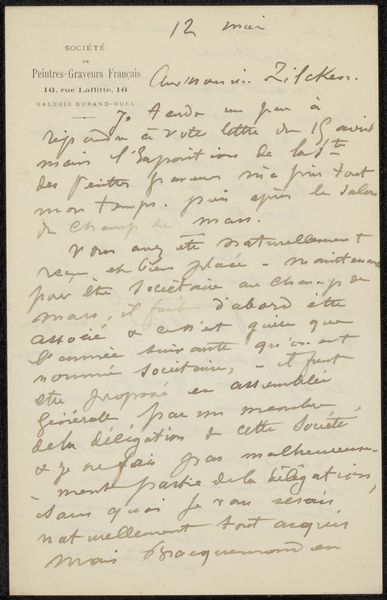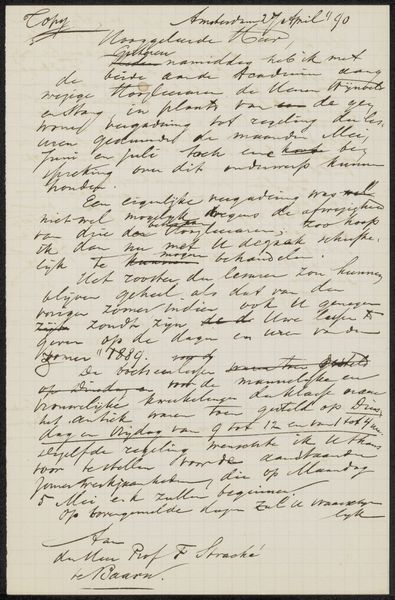
drawing, paper, ink
#
drawing
#
paper
#
ink
#
intimism
Copyright: Rijks Museum: Open Domain
Curator: This drawing, whose title translates as “Letter to Willem Kloos,” is believed to be from 1891 and is by the hand of Jan Veth. The medium here is ink on paper, held in the collection of the Rijksmuseum. It presents a densely written, almost block-like visual texture. Editor: It’s interesting that you point that out, as the visual impression is very textured. I’m immediately struck by a sense of intimacy and focus. The tight, controlled script really conveys an energy, almost like a hurried thought captured on paper. Curator: Yes, and that feeling absolutely speaks to the prevailing aesthetic of Intimism present here. A private communication rendered in a manner that eschews formality and grandeur in favor of conveying immediacy of thought and sentiment. It shows how visual composition might signal emotional states, despite our lack of understanding of the language and, as such, any clear message being presented. Editor: Absolutely. While we cannot discern its explicit message without translation skills, we are nevertheless able to feel some emotion that resonates through line, form, and overall arrangement. The drawing seems more like a composition than a direct transcription. The flow of the calligraphic lines create dynamic currents—pulling the viewer into an intimate cognitive space of introspection. Curator: This connects us to the way symbolic systems carry forward complex histories. Letters have always been important and powerful, and there is a way in which handwritten notes provide intimate connection in a tactile way that digital communications never could. I’m also curious about how this communicates and creates presence or absence; what is recorded versus what is purposefully obscured, even illegible. Editor: Those are potent aspects. It reminds us how all material gestures—from the deliberate stroke of a pen to the carefully chosen word—reveal intentions and motivations. We may not know the letter’s contents, but through the graphic structure alone, the drawing creates something quite intimate, and that, for me, unlocks the aesthetic fascination here. Curator: Absolutely; a gesture memorialized through material trace. This small, fragile artifact speaks volumes—beyond the capacity of language—about relationships, temporality, and intention. Editor: Beautifully put. It shows that, sometimes, we can glean the most profound meaning by focusing not on what something is "about" but on *how* it exists, formally and materially.
Comments
No comments
Be the first to comment and join the conversation on the ultimate creative platform.

